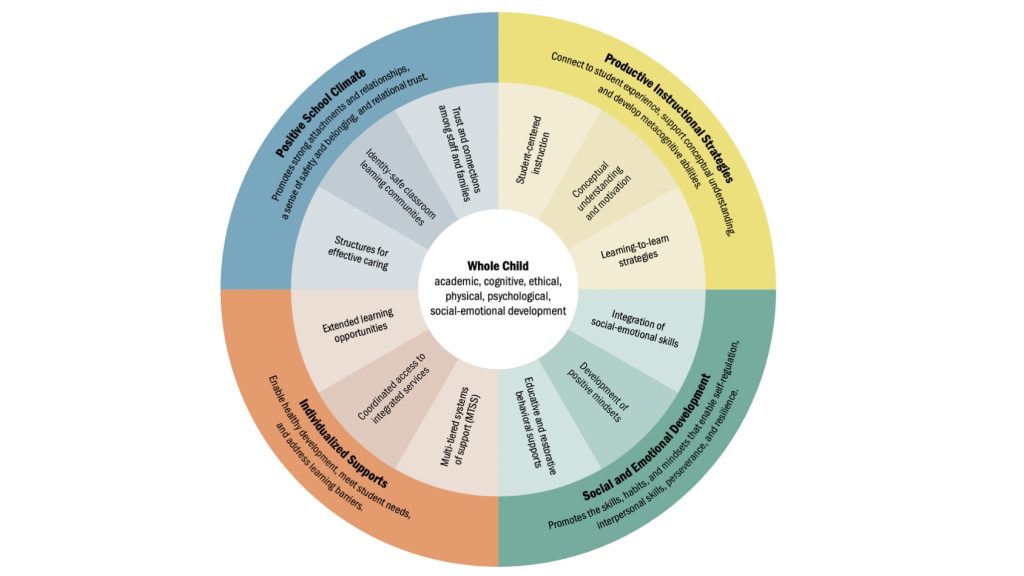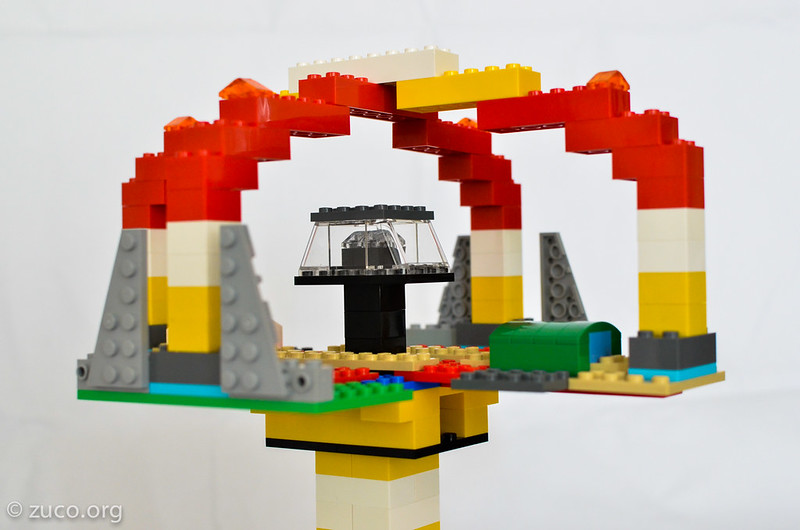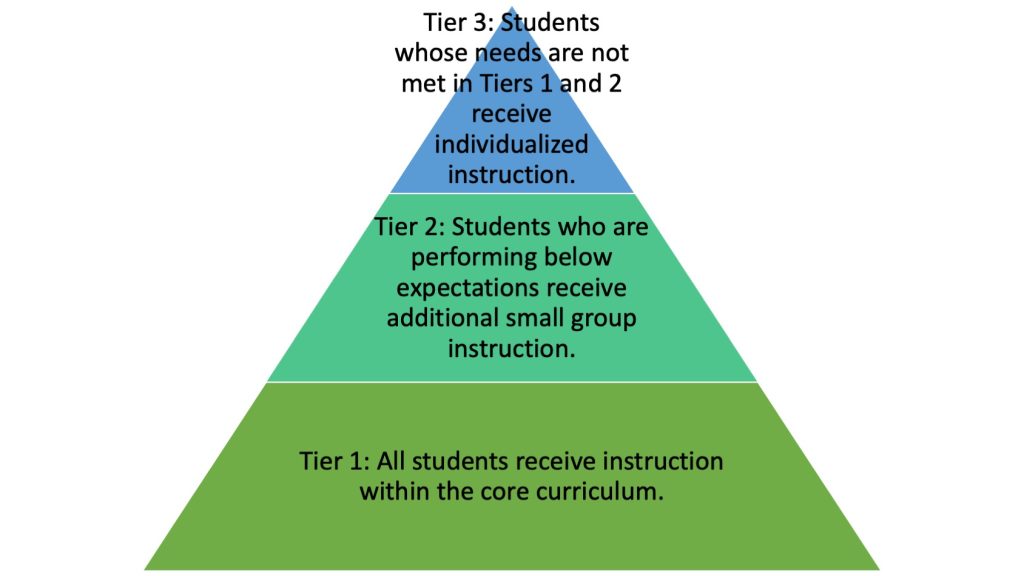Chapter 2: Planning for Instruction
Janine Davis and Courtneay Kelly

Ms. Setshwaelo gazes at the blinking cursor on the screen, lost in thought. Next week the icebreakers, community-building activities, and routine-developing tasks will be done, and it will be time to delve deeply into teaching the curriculum. While she would have liked to plan these lessons well in advance, there were a few reasons why things didn’t work out that way. Teaching at Franklin High last year had not been a good fit in part because every teacher in a content area was expected to teach the same lesson on the same day. The middle school reading program involved reading from a script of pre-planned lessons. Ms. Setshwaelo made the move to a new district because it promised more freedom in planning. She was excited to consider the specific needs of her students and classes to plan instruction for them, but it was going to be time consuming!
Everyone has observed someone else teach. Most people, by the time they are young adults, will have seen thousands of lessons. Because of this time as a student, many people believe that teaching is easy, and that it requires no training–in many cases, we may have had the chance to watch someone who made teaching look easy. Lortie (2020) refers to this phenomenon as the “apprenticeship of observation.” What we didn’t see during that extended time observing teachers was all of the work that went into the lessons before or after they were taught. Planning instruction involves a plethora of decisions. There is no end to the considerations that a teacher must keep in mind, including
- What knowledge and experiences do the students already have that relate to this content? Is there any reason why they might have a strong reaction to the content that could affect how it is taught?
- How many students are in the class?
- How much time is available to teach the content? How long are the class meetings, and what other events are occurring that might affect students’ concentration or focus?
- What do I, the teacher, already know about the content, and what might I need to learn or review to prepare?
- What do the students prefer in terms of instructional delivery methods?
- What kinds of methods make the most sense with this content?
- What assessments are appropriate for these students, and how have they performed on related assessments in the past?
- What accommodations must be in place for students with different learning strengths and needs?
- What materials, assessments, and resources will be available to support students during and after instruction?
One of the most important principles to consider is that content drives instructional choices. The way that teachers convey information is nearly as important as the information itself. For example, if my goal is to teach a group of students how to crochet, it would not be a good fit to have students look at a worksheet of how to crochet without ever touching yarn or a crochet needle. Similarly, if I plan to teach students about the process of photosynthesis or the life cycle of a frog, there is some important information to address before launching into that material, such as: what is a frog? What is a kind of plant that photosynthesizes?
How the Brain Works
Teachers can learn a lot from the principles of cognitive psychology. Research has taught us many lessons about the way the brain works when we learn new things; for example, repetition and practice help. Targeted feedback helps. Feeling safe in school helps. A comprehensive synthesis of research shows that while deep knowledge of facts matters to learning, “experts’ knowledge is connected and organized around important concepts” (Bransford, Brown, & Cocking, 2000, p. 9). Table 2.1 outlines several specific strategies that can aid learning.
Table 2.1: Learning Techniques (from Dunloskey et al., 2013, p. 6)
| Technique | Description |
| 1. Elaborative interrogation | Generating an explanation for why an explicitly stated fact or concept is true |
| 2. Self-explanation | Explaining how new information is related to known information, or explaining steps taken during problem solving |
| 3. Summarization | Writing summaries (of various lengths) of to-be-learned texts |
| 4. Highlighting/underlining | Marking potentially important portions of to-be-learned materials while reading |
| 5. Keyword mnemonic | Using keywords and mental imagery to associate verbal materials |
| 6. Imagery for text | Attempting to form mental images of text materials while reading or listening |
| 7. Rereading | Restudying text material again after an initial reading |
| 8. Practice testing | Self-testing or taking practice tests over to-be-learned material |
| 9. Distributed practice | Implementing a schedule of practice that spreads out study activities over time |
| 10. Interleaved practice | Implementing a schedule of practice that mixes different kinds of problems, or a schedule of study that mixes different kinds of material, within a single study session |
Review the list above and consider your own experiences that employed these strategies. For example,
- Keyword mnemonic: recalling the acronyms PEMDAS or SOH-CAH-TOA in mathematics helps one know how to solve certain problems
- Highlighting/underlining: practice in determining what is most important to be highlighted in a text helps a reader pick out main ideas and supporting details
- Imagery for text: picturing the way the characters or setting looks can help the reader recall the events of the text and determine how they connect together.
- Distributed practice: scheduling 30 minutes of studying each day or completing a large project in smaller scheduled chunks may have helped you be more successful than if you had been asked to simply hand in a major project at the end of the course without any checkpoints along the way.
Principles of cognitive science show that teachers should determine students’ prior knowledge, provide foundational factual knowledge, and help students use metacognitive strategies to think about their thinking (Bransford, Brown, & Cocking, 2000). As National Board certified, experienced elementary teacher Sandra Kelish notes,
The brain is a pattern detector. It seeks connections, relationships, and relevancy when encountering new knowledge, skills, and strategies. Therefore, teachers must explore and use protocols or practices that enhance student learning and provide opportunity and time to grapple, think, and seek connections with what they know to new knowledge.
A report by Linda Darling-Hammond and Channa Cook-Harvey outlines several of these important ideas, including that supportive relationships and systematic family supports are vital to learning. Figure 2.1 portrays their framework for whole child education.
Figure 2.1: A Framework for Whole Child Education

Backward Design
A practice used in many school divisions is called Understanding by Design or Backwards Design, which was developed by Wiggins and McTighe (2011). The following resource by the Vanderbilt Center for Teaching offers an in-depth look at the benefits of this system of planning and instruction. A teacher using this system will complete following steps:
- Identify desired results first
- Determine acceptable evidence
- Plan instruction
In their book, Understanding by Design, Wiggins and McTighe (1998) guide teachers into seeing that backward design is focused primarily on student learning and understanding. When teachers design lessons or units, the focus may often be on the activities and instructional procedures rather than the outcomes of the lesson or unit. Backward design flips this, so that teachers are focused more on student learning than on teaching procedures and activities. A word that you will see often in this text is alignment, which means that there is a match between the goal and the instruction.
Backward design is beneficial because it innately leads to purpose and intentionality when lessons or units are being designed. It encourages the teacher to establish the purpose (intended outcomes) of doing something before implementing it into the curriculum. Once the learning goals, or desired results, have been identified, teachers will have an easier time developing aligned assessments and instruction around these outcomes.
As the quote below highlights, teaching is not just about engaging students in content., but also about ensuring students have the resources available to ensure understanding.
In teaching students for understanding, we must grasp the key idea that we are coaches of their ability to play the ‘game’ of performing with understanding, not tellers of our understanding to them on the sidelines. Deliberate and focused instructional design requires us as teachers and curriculum writers to make an important shift in our thinking about the nature of our job. The shift involves thinking a great deal, first, about the specific learnings sought, and the evidence of such learnings, before thinking about what we, as the teacher, will do or provide in teaching and learning activities (Wiggins & McTighe, 1998).
Once students have a basic understanding of a topic, it can be useful for them to locate or create their own analogies or metaphors. Figure 2.2 is an example of images that students in one course collected to sum up their prior knowledge about backward design.
[Figure 2.2 Coming Soon!]
Figure 2.2 is an example of a quick way of determining what students know; initial impressions show that these students are familiar with backward design as something related to starting with the end in mind (accurate!), but also that there are two pictures of cats that might require some further explanation–in response to a teacher’s inquiry about their posts, the student’s answer could be a) I feel the way the gray cat looks–nervous and maybe a little overwhelmed, or b) backward design is like a the black cat in the box–it’s a natural fit that all of the complicated content that we’d like to convey is packaged in an organized and engaging way. To extend the latter example, it makes sense for cats to be inside of boxes in the same way that it makes sense for content to be organized in backward-designed units. Chapter 9 provides a more detailed explanation of how to construct an instructional unit using the principles of backward design.
Kinds of Knowledge
When you think of knowledge, what do you picture? Is it a jumble of all of the bits of information that we hold in our heads? Not all knowledge is created equal; we can group knowledge into different types. Although there are differing ways to categorize and think about knowledge, for the purposes of this text, we will consider four kinds of knowledge: factual, conceptual, procedural, and metacognitive. For the sake of creative and conceptual thinking, let’s consider all of these kinds of knowledge as metaphors for various aspects of building with something that is also an engaging, versatile tool for learning: LEGO bricks (Figure 2.3).
Figure 2.3: LEGO Bricks

Facts
Facts are like LEGO bricks. Facts are the details that add up to build our knowledge about something. Factual knowledge has been measured and verified in the past. Be careful: many things that seem like facts are not actually facts at all! Just as young children can discuss and understand the difference between wants and needs, so too should we constantly consider what is a fact. Is the sky always blue? No–sometimes it looks white or gray or even a wide variety of other colors. Does everyone see color in the same way? No. How many planets orbit the sun in our solar system? Well–it’s eight, but there are some complications. Jupiter is so big that it doesn’t technically orbit (Letzter, 2019), and in the past, scientists considered Pluto to be a planet, but its classification has changed. What about the size of objects? I can say that a certain ball has a circumference of 7.5 inches (I could verify that fact), but that will not be true of every ball. The weather all over the world last Tuesday was measured and recorded in a database, but even if I look at the weather report and see that it is supposed to rain on Friday, that is not a fact: it hasn’t happened yet.
Concepts
Concepts are like a category of LEGO, such as minifigures, architecture, or BrickHeadz. It is a kind of umbrella under which many examples may be classified. Usually a concept is a word or phrase such as art styles, figurative language, or organisms. If you were to analyze the CCCS or Virginia SOLs, you would find hundreds of concepts there.
Procedures
Procedures like the how-to guide that comes in a LEGO kit; they show us the steps we should take to complete the project. Procedural knowledge is very common in schools; for example, students learn how to write sentences, paragraphs, essays, and lab reports. They learn how to solve math problems, practice lab safety, and thousands of other things by the time they complete their time in schools. When teaching procedures, it’s important to give students the chance to practice them.
Metacognitive Knowledge
The simplest definition of metacognitive knowledge is thinking about thinking. Metacognition is like the debriefing that a LEGO Master might do after building a complicated model; they may discuss how and why they made certain choices to strengthen their design. This kind of knowledge is often challenging for students and teachers alike–it’s a skill that we must develop to think about what we’re doing, why we’re doing it, and how we might do things differently. When we look at the Standards of Learning in Virginia, often this kind of knowledge is not immediately clear–teachers must think about the content and the ways that we can teach students to think about their thinking along the way. For example, in art, music, drama, or creative writing, students should be thinking about what makes something art, and how they will know when their work is finished. Revision during writing is tied to metacognition–we have to look at what is already on the page, and think about whether what we put there makes sense for our audience.
Models of Instruction and Strategies
Figure 2.4: Blueprint

Why does it matter to know if something is a concept or a procedure? Why be so obsessive about what we consider to be a fact? It matters because the kind of knowledge that we are teaching affects how we teach it. If we want students to learn how to play soccer–an example of procedural knowledge–it doesn’t make sense to give them a lecture and a written test about it. If we want students to learn the names of and details about several characters in a story, and this is one of the first times that they are practicing such a skill, it would be most effective to provide students with examples of characters from other stories they know first–a teacher might use a graphic organizer or any number of strategies for that, but in this case students will understand the task if they have examples first and a way to organize those examples.
Most people who are just beginning to plan instruction for a group of students will think in terms of activities; however, thoughtfully planned instruction is far more than a series of activities. Models of instruction are a set of steps that a teacher might follow. Some choices are better for certain kinds of knowledge than others. Just as an architect designs a blueprint for a building, a teacher should think ahead to determine what the underlying structure of the lesson will be. This book will describe several different models and strategies that are supported by research. Many will be exciting to both teachers and students, and that is one of the best things about them; however, the models and strategies you choose depend upon the kinds of knowledge that you are teaching. Taking a field trip is an excellent way to learn about a historical place, but if it occurs randomly or students don’t have the opportunity to connect it to prior and future instruction, it will not be as powerful as it could be. In the following example, consider all of the planning involved in making a field trip impactful.
Ms. Jameson’s secondary theatre arts course takes field trips to a regional theatre to view four matinee productions a year. Before the bus pulls away from the school, the students have read and discussed the plays in class and completed play review forms where they consider casting, costume, and set design ideas. Immediately after the production, they attend a talkback session with the actors and directors to understand more about the process of producing the play. Later that week, back in class, they debrief with their honest responses to the production, including which parts matched their expectations and what choices were less popular given their own reading of the play.
This book will share dozens of teaching strategies and models of instruction that are effective with all kinds of students, content areas, and situations. While strategies can be used with nearly any lesson, models are more specific in terms of how to match kinds of content with a series of steps that makes sense. Intentional, varied instructional planning is not only engaging for both students and teachers, but it is also a part of the system of how teachers can identify student interests, strengths, and needs. The next section addresses the role of instructional planning within this larger context.
Response to Intervention
In any given K-12 general education classroom, students exhibit differing strengths and needs when it comes to learning. It can be a challenge for teachers to immediately understand why students struggle in different ways. Response to Intervention (RtI) aims to provide early identification of struggling students and supports to help students be successful in school. The key word is intervention.
There are three tiers in the RtI approach (Figure 2.5). Tier one focuses on universal instruction, or effective teaching practice for all students in a classroom. When students begin to show signs of struggle, then teachers may provide Tier two, or small-group, targeted explicit intervention. If, after evaluation of this process, a student is still clearly struggling, the teacher may move to Tier three, or intensive individual interventions. Before moving a student into or out of a RtI tier, it is important to gather data to support that decision. In the RtI approach, nothing is left to guesswork and every decision is data-driven. RtI is not a specific program. It is a proactive approach to provide intervention to students who are demonstrating specific learning needs or struggles.
Figure 2.5: Response to Intervention (RtI) 3-Tiered Model

The strategies in this text will help you consider what kinds of instruction will work best at all levels of a system like RtI.
Key Chapter Takeaways
- Methods of instruction must be appropriate for the content.
- Teachers should be aware of the kinds of information and knowledge they will teach and select instructional methods accordingly.
- Carefully planned instruction is at the core of how teachers meet students’ needs and help them to develop their skills and interests.
Application Questions
- Make a list of all of the most memorable content from your content area. Categorize the content into the four kinds of knowledge discussed in this chapter.
- Consider the ways that your previous teachers taught. What were some strategies they used that were memorable and engaging, and which strategies were less successful?
- Imagine that you have planned a whole-class lesson on primary sources. Your initial assessment shows that only half of the students met the objectives you identified. What steps would you take next, and why?
References
Bowen, R. S. (2017). Understanding by Design. Vanderbilt University Center for Teaching. https://cft.vanderbilt.edu/understanding-by-design/.
Bransford, J. D., Brown, A. L., & Cocking, R. R. (2000). How people learn: Brain, mind, experience, and school. National Academy of Sciences.
Darling-Hammond, L., & Cook-Harvey, C. M. (2018). Educating the whole child: Improving school climate to support student success. Learning Policy Institute. https://doi.org/10.54300/145.655
Dunlosky, J., Rawson, K. A., Marsh, E. J., Nathan, M. J., & Willingham, D. T. (2013). Improving students’ learning with effective learning techniques: Promising directions from cognitive and educational psychology. Psychological Science in the Public interest, 14(1), 4-58.
Letzter, R. (2016, July 19). Forget what you heard: Jupiter does not orbit the sun. Business Insider. https://www.businessinsider.com/jupiter-does-not-orbit-the-sun-2016-7
Lortie, D. C. (2020). Schoolteacher: A sociological study. University of Chicago press.
Wiggins, G., & McTighe, J. (2011). The Understanding by Design guide to creating high-quality units. ASCD.

